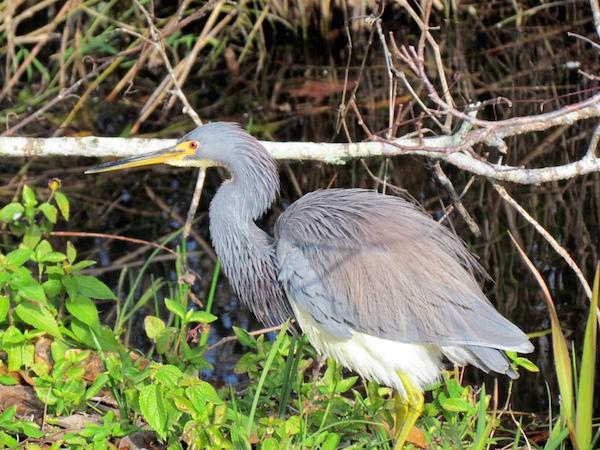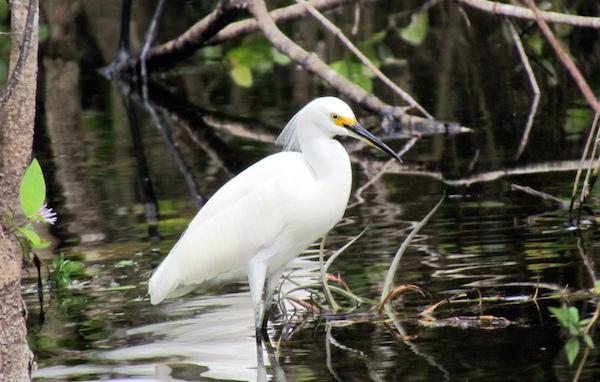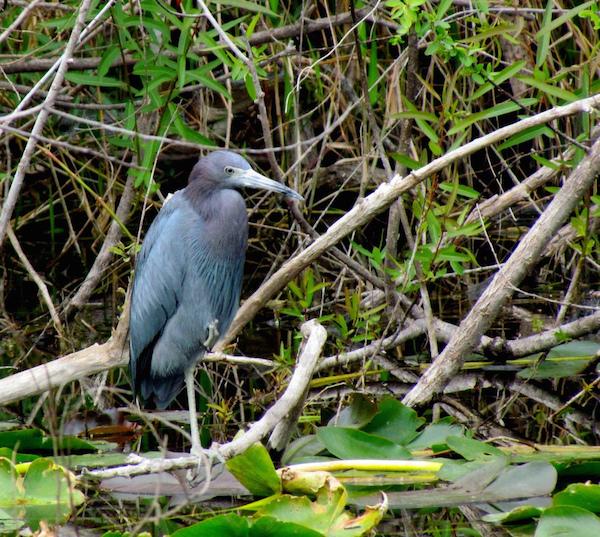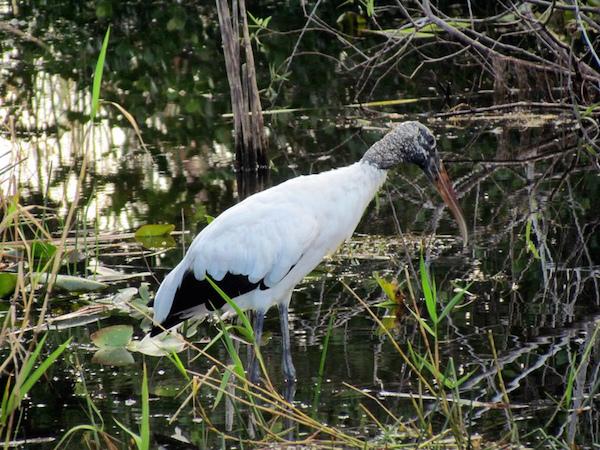
Why are Tricolored Herons not nesting as much in south Florida as they have in past years?/Kirby Adams
No national park is more associated with birds than Everglades, and the most prominent birds in the park are undoubtedly the waders. Herons, egrets, storks, and ibises are the rock stars of the Everglades. The park was even created partly with the protection of egrets in mind after plume hunting for the millinery industry nearly wiped them out in the 19th century.
Today we'd like to think that the protection afforded to waders by Everglades National Park and Big Cypress National Preserve is enough to keep the populations in south Florida happy and healthy. A new report suggests that may not be the case.
The South Florida Wading Bird Report from the South Florida Water Management District points to a 28 percent drop in nest initiation for waders during the December 2013-July 2014 nesting season as compared to the previous year. Last year's efforts totaled 34,741 nests compared to the previous season's 48,291. That's more than 13,000 fewer nests producing offspring to sustain the bird population.
The wading bird report has been issued for 20 years now, providing long-term data about annual nesting dynamics. Thanks to this continuous monitoring we know last season's total was not only a significant year-over-year drop, but also 18 percent below the decadal average.
The most shocking decline is probably the Little Blue Heron. The diminutive wader's nest initiation declined 83 percent in one season, putting them 91 percent below the nine-year average. Only four Little Blue Heron nests were located in the Everglades last year. Recent years have seen consistent declines in the other small herons monitored, the Tricolored Heron and the Snowy Egret (egrets are members of the heron family).

The Snowy Egret, the unofficial mascot of Everglades National Park, has seen a staggering drop in nesting in the park/Kirby Adams.
The Snowy Egret is the unofficial mascot of the Everglades. Their numbers were reduced to critically low levels during the market hunting craze before federal protection in the form of the Migratory Bird Act and the creation of Everglades National Park stopped the massacre.
In the mid-2000s, more than 1,000 Snowy Egret nests were recorded in the park, but the last nesting season saw only 122. No one outside of the extremely rare poacher is killing snowies for feathers anymore, so why aren't they nesting?
The answer lies, as most things do, with the altered hydrology of the Everglades. The ecosystem is under constant stress from the rapidly changing climate, as well as development outside of the Everglades that restricts water flow to the wetlands. One of the aims of the wading bird report is to guide restoration and management activities within the park and Greater Everglades Region. If ecological conditions continue to degrade, the report authors say, irreversible damage may be done and nesting targets may become unattainable.

The number of Little Blue Herons nesting in south Florida has fallen more than 90 percent below long-term averages/Kirby Adams
It's interesting and important to note that the decline in nesting these data point to is not necessarily something tourists or even seasoned birders would notice.
I was in Everglades National Park and Big Cypress National Preserve during the 2013-14 nesting season and can't say that anything was noticeably wrong with the wader numbers. Access to Paurotis Pond was restricted for spoonbill and stork nesting, but Roseate Spoonbills were still visible as usual from the open parking and picnic area. Their presence belied the reality that only 50 nests were initiated in 2014 in the central Everglades, compared to more than 200 annually in the last few years.
The glimmer of good news from the report was that the Wood Stork, a federally threatened species, is increasing its nesting activity throughout the region. The nearly 2,800 Wood Stork nests were a 26 percent improvement over the nine-year average. The report suggests greater fish production from higher rainfall benefitted the storks, though apparently not the other waders, as the storks were the only birds in the report to prosper last year.
Although their nesting attempts declined last season, Great Egrets and the ibises have increased activity over the past 15 years and regularly meet restoration targets.
Determining the cause of the substantial decline for the other herons is critical. 'An environmentally healthy Everglades Region is vitally important to many thousands of wading birds. Clearly, the significant decline in the nesting of many of the typical species of the region tells us that much remains to be done to make it a properly functioning ecosystem,' says Kacy Ray, director of the American Bird Conservancy's Beach Nesting Birds Program.
Everglades National Park is a haven for birds and birders alike, but it's a delicate ecosystem that is completely at the mercy of human management. That's worth remembering when checking out a roost of Snowy Egrets at Coot Bay. It's too late to save them by merely leaving them alone.

Wood stork nesting in south Florida is up on the upswing/Kirby Adams



Add comment